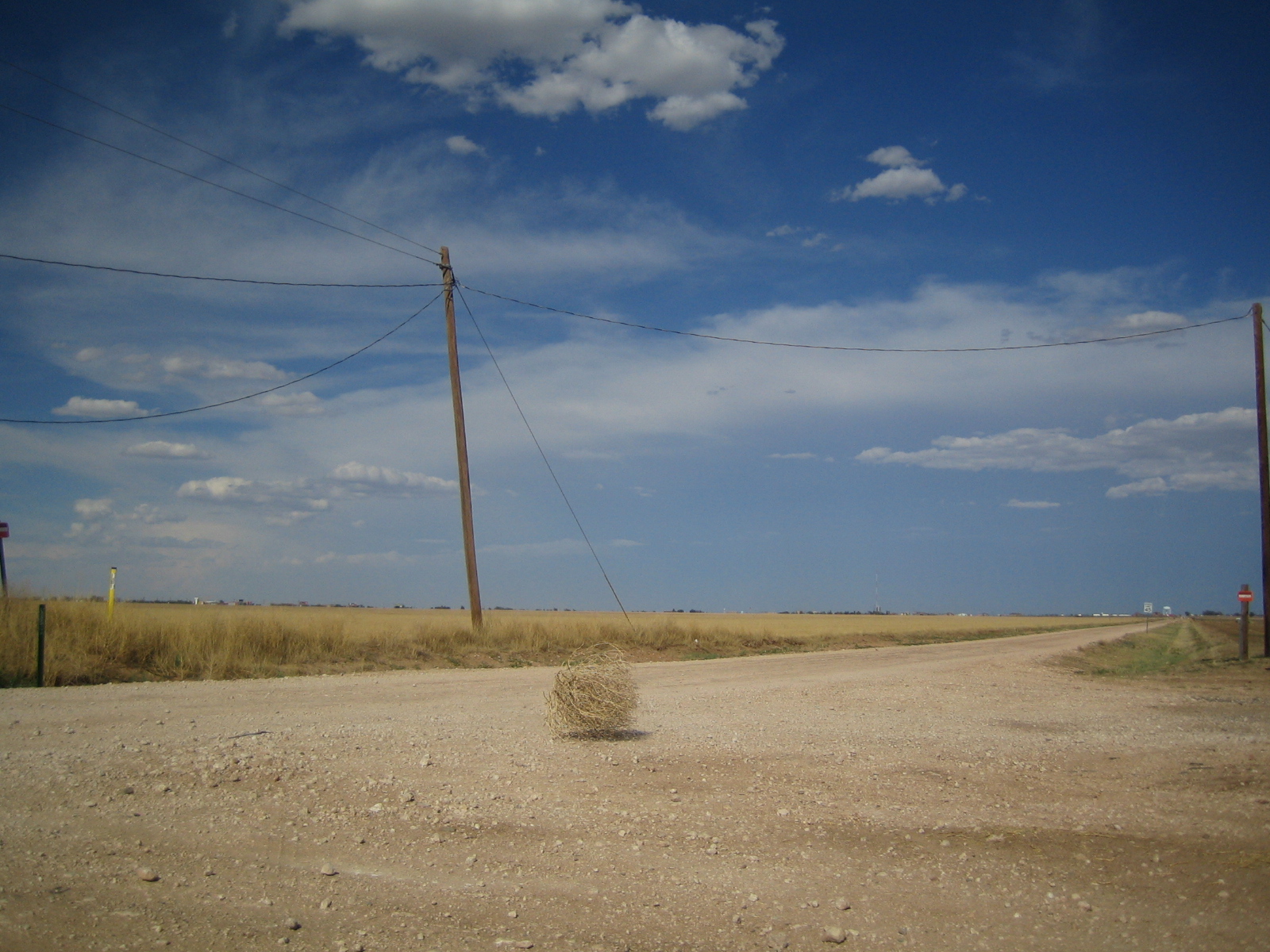
Jez Arnold (https://www.flickr.com/photos/jezarnold/140044286/) CC-by-sa-2.0 (https://creativecommons.org/licenses/by-sa/2.0/)
Kali tragus, more commonly known as Russian thistle, is an invasive weed brought over by Russian immigrants in 1873 in a batch of flaxseed. In 15 years, the tumbleweeds had spread from South Dakota as far as California, scattering 250,000 seeds per plant as they go tumbling along. With dry weather and native prairie grass pulled up by farmers, the tumbleweed flourished.
Tumbleweeds were a menace that drove people out of their homes. They were also a fire hazard. The flammable shrubs would cluster along fences and houses, a firestorm ready to happen.
Despite the problems they caused farmers, Hollywood latched onto them as a symbol of the frontier spirit. But the weeds still cause problems, blocking freeways and overwhelming homes. We’ll let you decide if there’s irony in that metaphor or not.
If you’d like to read more, National Geographic has a great article on the topic. Mother Nature Network has an article that includes some video footage of tumbleweeds causing problems.
Photo by Jez Arnold (Tumbleweed) [CC BY-SA 2.0 (http://creativecommons.org/licenses/by-sa/2.0)], via Wikimedia Commons
Follow us online: